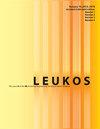基于一次实地测量的气候采光模式的校正与验证:热带地区办公楼
IF 2.6
2区 工程技术
Q2 CONSTRUCTION & BUILDING TECHNOLOGY
引用次数: 13
摘要
校准的基于气候的建筑物照明模拟模型有能力在入住后评估中发挥重要作用,例如采光质量和视觉不适的年度频率评估。然而,在大多数租赁后的案例研究中,照明分析的作用暂时受到瞬时测量的限制,或者由于需要使用昂贵的传感器进行持续监测而在规模上受到限制。由于电力照明的存在,动态阴影的短暂使用,材料规格信息有限,以及研究空间的可达性持续时间短,因此基于时间点测量建立校准模型具有挑战性。作者提出并提出了一个年度采光和电气照明模拟模型的校准过程,该模型基于对大型采光和电气照明空间的一次性现场测量,通过对10个办公空间的540个单独办公桌的数据集进行举例说明。校准过程包括在一次访问期间测量照明,物理和材料数据,用于使用实际天气数据校准高动态范围图像和照明模拟模型。基于实测和模拟的亮度和照度数据验证了标定精度。比较实测照度和模拟照度,水平和垂直测量的相对均方根误差(RMSE)分别为25.8%和45.5%。当使用log10(照度)跟踪误差时,接近人类感知差异,误差分别为4.3%和6.8%。由于显示器屏幕亮度的不确定性,垂直照度随测量数据的变化更大。作者的目标是实现校准的照明模型,该模型足够可靠,可用于评估年度照明指标与参与者对照明质量的长期感知之间的关系,从而使模拟模型能够用于建筑照明的入住后评估过程。本文表明,通过一次性访问的测量数据可以用来建立可靠的校准照明模拟模型,以整合长期的年度照明结果,以进行售后评估。本文章由计算机程序翻译,如有差异,请以英文原文为准。
Calibration and Validation of Climate-Based Daylighting Models Based on One-Time Field Measurements: Office Buildings in the Tropics
ABSTRACT Calibrated climate-based lighting simulation models of buildings have the capacity to perform an essential role in postoccupancy evaluations, such as annual frequency assessments of daylighting quality and visual discomfort. However, in most postoccupancy case studies the role of lighting analysis is temporally limited by instantaneous measurements or limited in scale by requiring constant monitoring with expensive sensors. It is challenging to build calibrated models based on point-in-time measurements due to the presence of electric lighting, transient use of dynamic shades, limited information on the material specifications, and short durations of accessibility to the spaces being studied. The authors propose and present a calibration process for annual daylighting and electric lighting simulation models based on one-time field measurements of large daylit and electrically lit spaces exemplified through a data set of 540 individual office desks across 10 office spaces. The calibration process includes measuring lighting, physical, and material data during a one-time visit that are used to calibrate high dynamic range images and lighting simulation models using actual weather data. The calibration accuracy is validated based on measured and simulated luminance and illuminance data. Comparing measured and simulated illuminance, relative root mean squared error (RMSE) values were 25.8% and 45.5% for horizontal and vertical measurements, respectively. When tracking errors using log10(illuminance), approximating human perceptual differences, errors of 4.3% and 6.8% were achieved. Vertical illuminance was found to vary more with measured data due to the uncertainty of monitor screen luminances. The authors aim to achieve calibrated lighting models that are reliable enough to be used in assessing the relationship of annualized lighting metrics to participants’ long-term perceptions of lighting quality, thereby enabling simulation models to be used in the postoccupancy evaluation process of building lighting. This article demonstrates that measured data through one-time visits can be utilized to build reliable calibrated lighting simulation models to integrate long-term annual lighting results in postoccupancy evaluations.
求助全文
通过发布文献求助,成功后即可免费获取论文全文。
去求助
来源期刊

Leukos
工程技术-光学
CiteScore
7.60
自引率
5.60%
发文量
19
审稿时长
>12 weeks
期刊介绍:
The Illuminating Engineering Society of North America and our publisher Taylor & Francis make every effort to ensure the accuracy of all the information (the "Content") contained in our publications. However, The Illuminating Engineering Society of North America and our publisher Taylor & Francis, our agents, and our licensors make no representations or warranties whatsoever as to the accuracy, completeness, or suitability for any purpose of the Content. Any opinions and views expressed in this publication are the opinions and views of the authors, and are not the views of or endorsed by The Illuminating Engineering Society of North America and our publisher Taylor & Francis. The accuracy of the Content should not be relied upon and should be independently verified with primary sources of information. The Illuminating Engineering Society of North America and our publisher Taylor & Francis shall not be liable for any losses, actions, claims, proceedings, demands, costs, expenses, damages, and other liabilities whatsoever or howsoever caused arising directly or indirectly in connection with, in relation to, or arising out of the use of the Content. Terms & Conditions of access and use can be found at http://www.tandfonline.com/page/terms-and-conditions .
 求助内容:
求助内容: 应助结果提醒方式:
应助结果提醒方式:


